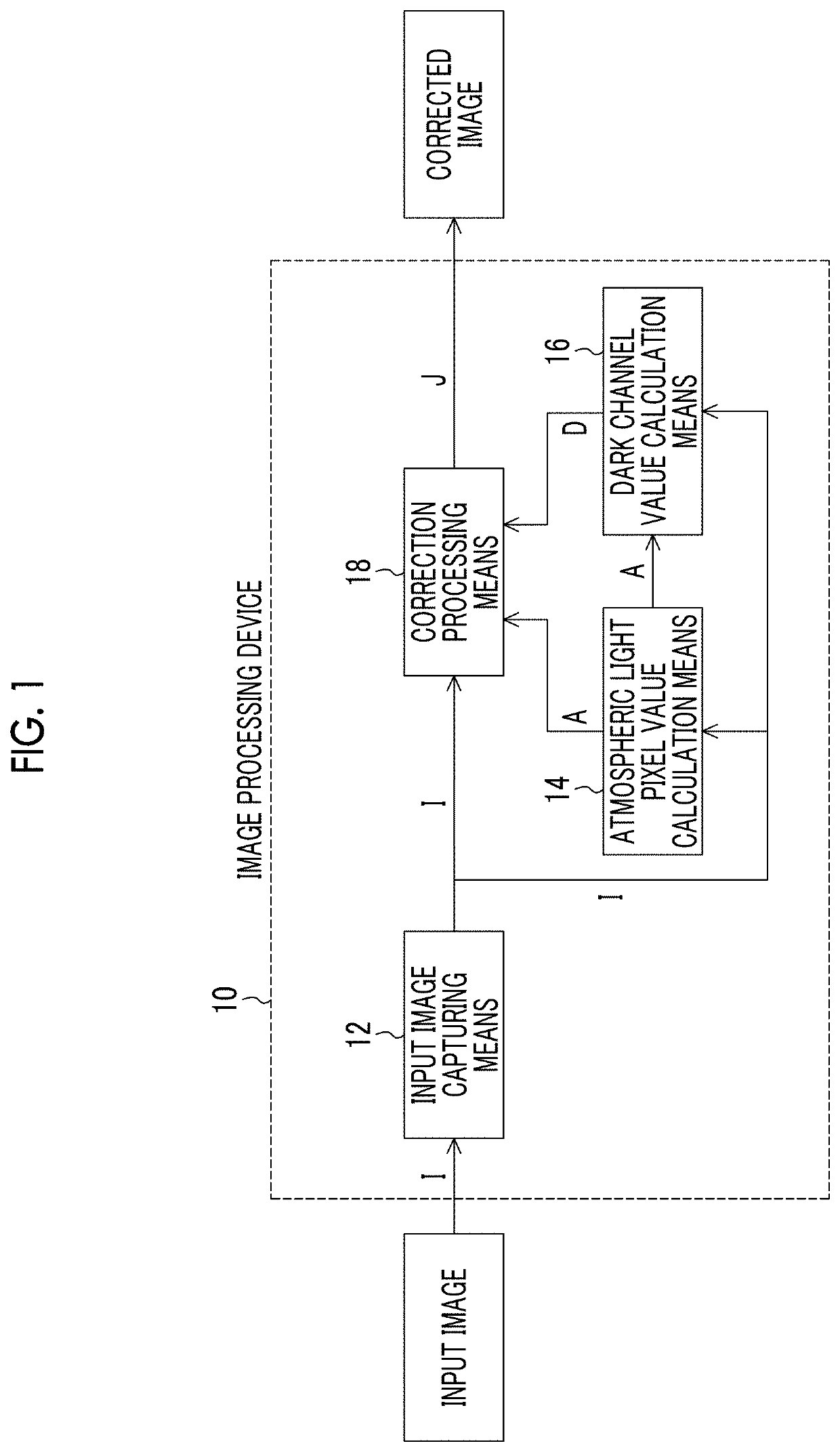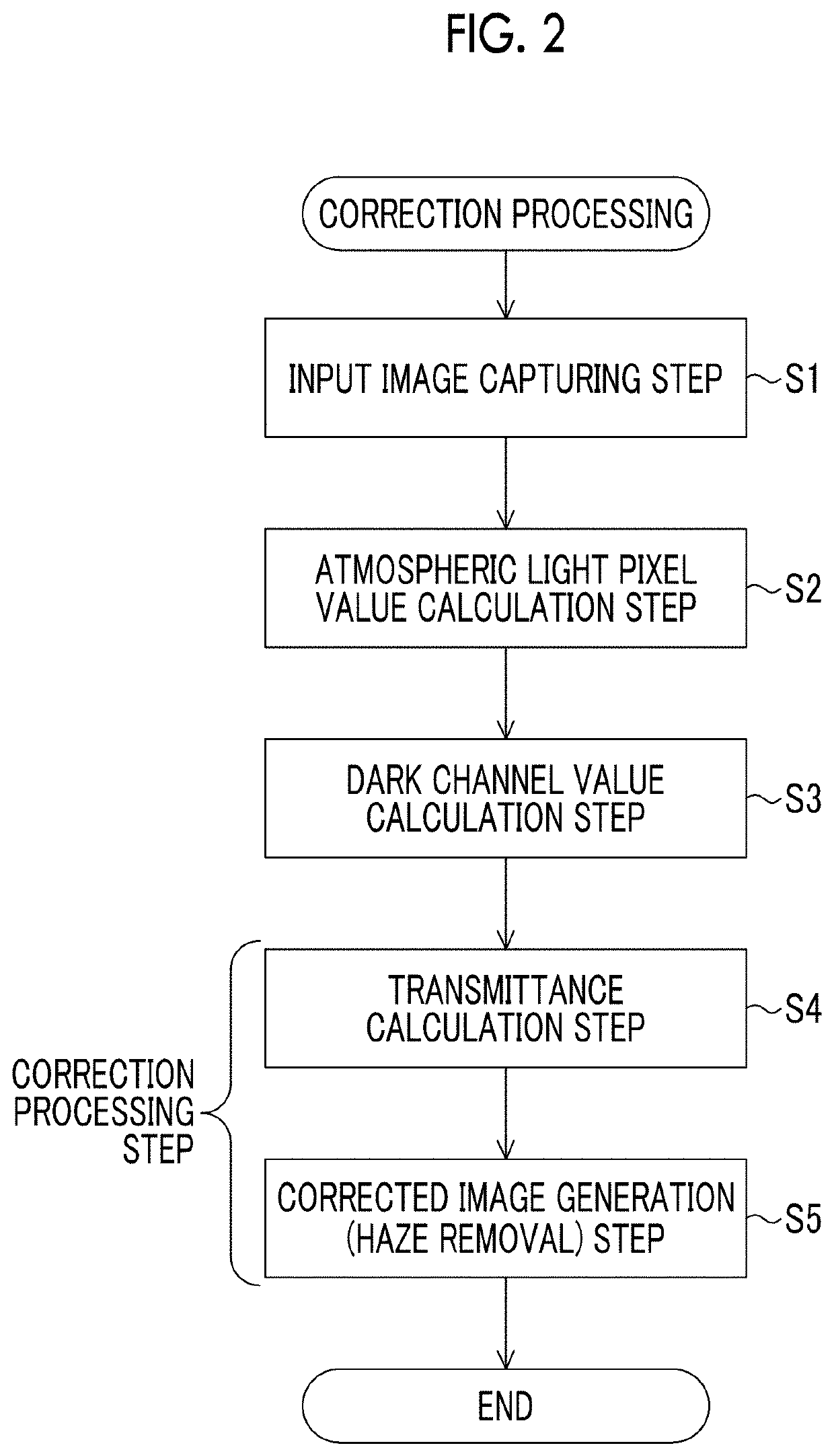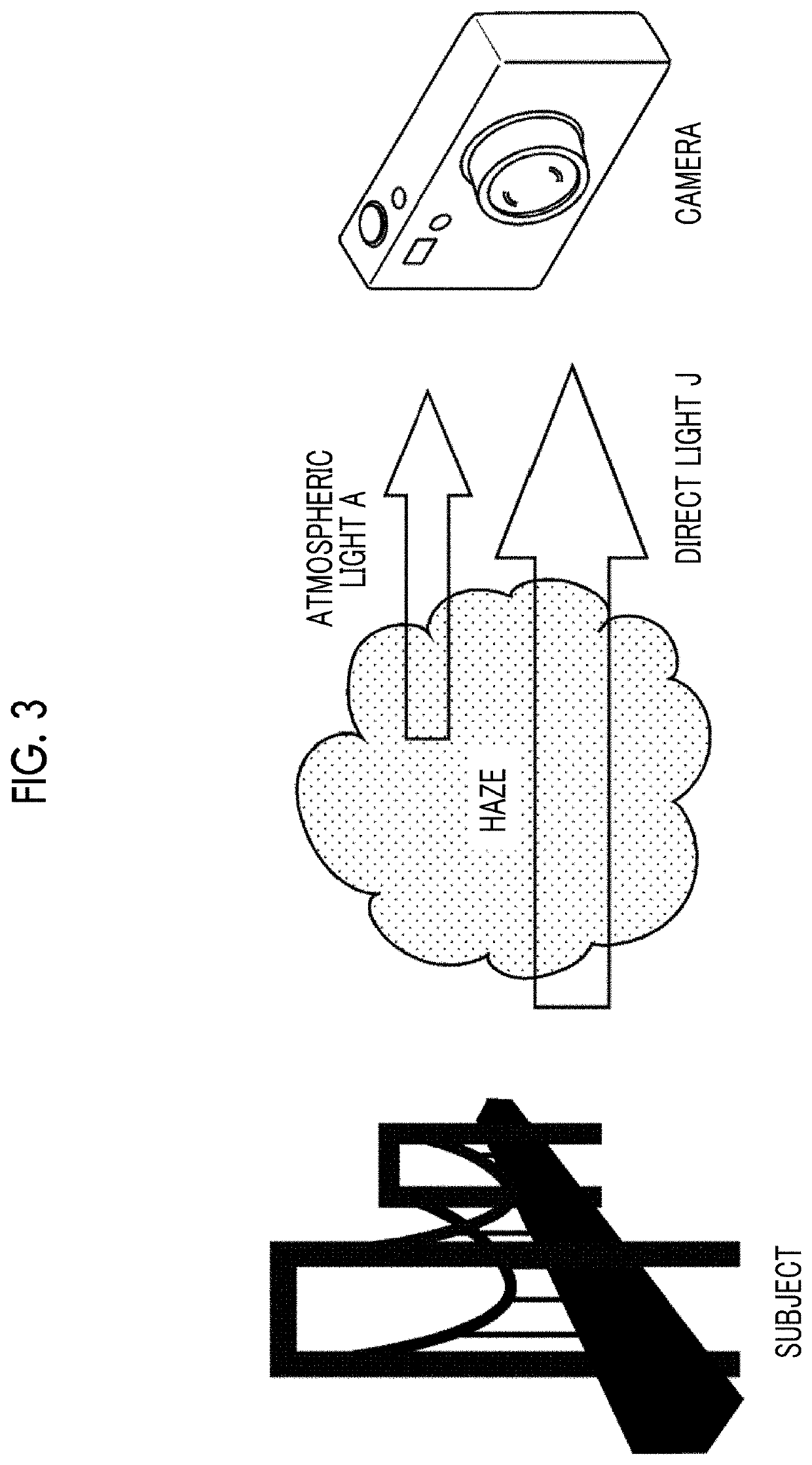Image processing device and image processing method
a technology of image processing and image processing device, which is applied in the field of image processing device and image processing method, can solve the problems of extremely small degree of effect of original image, inability to correctly obtain the large degree of effect of haze, etc., to achieve the effect of removing haze without losing the detail of a high-luminance subj
- Summary
- Abstract
- Description
- Claims
- Application Information
AI Technical Summary
Benefits of technology
Problems solved by technology
Method used
Image
Examples
first embodiment
[0098]FIG. 6 is a graph illustrating the correspondence relationship between the dark channel value D and the transmittance tin the
[0099]In the drawing, the maximum value Dmax indicates a maximum value of the dark channel values D(x) of all the pixels in the input image I, and the dark channel value D indicates a value in the range of 0 or more and Dmax or less.
[0100]In a case where there is a subject having a higher luminance than that of haze, the dark channel value D may be greater than 1. At this time, the maximum value Dmax also has a value greater than 1.
[0101]On the other hand, the transmittance t is a value in the range of 0 or more and 1 or less.
[0102]Then, at a value in the range where the dark channel value D is equal to or greater than 0 and equal to or less than 1 (the range from 0 to 1), the dark channel value D and the transmittance t have the relationship of Expression (9), that is, the relationship of the straight line L1 in FIG. 6. Therefore, the transmittance t is...
second embodiment
[0125]FIG. 8 is a graph illustrating the correspondence relationship between the dark channel value D and the transmittance tin the
[0126]In the transmittance calculation processing, the correction processing means 18 is able to use the relationship of FIG. 8 instead of FIG. 6.
[0127]As shown in the drawing, in a case where the dark channel value D is a value in the range of 0 or more and 1 or less, the transmittance t is acquired by the relationship of Expression (12), that is, the relationship of the curve L3 in FIG. 8.
t=1−Dr1 (12)
[0128]Here, r1 is set to be less than 1.
[0129]In contrast, in a case where the dark channel value D is a value in the range of greater than 1, the transmittance t is acquired by the relationship of Expression (13), that is, the curve L4 in FIG. 8.
t={(D−1) / (Dmax−1)}r2 (13)
[0130]Here, r2 is set to be greater than 1.
[0131]Here, in Expressions (12) and (13), it is desirable that r1 is a value less than 1 and r2 is a value of greater than 1, but r1 may be a...
third embodiment
[0134]FIG. 9 is a graph illustrating the correspondence relationship between the dark channel value D and the transmittance t in the
[0135]Here, the dark channel value D in the present embodiment is different from those in the first and second embodiments, and it does not correspond to the dark channel value in its original sense, but is referred to as a dark channel value in the present embodiment.
[0136]In the present embodiment, the dark channel value calculation means 16 calculates the dark channel value D(x) of the pixel x for each pixel by using Expression (14) through a dark channel value calculation processing.
[0137]D(x)=miny∈Q(x)(α(255-Iy(y))+β(Icb(y)+Icr(y))α(255-Ay)+β(Acb+Acr)+ɛ).(14)
[0138]Expression (14) is specialized in the case of using the YCbCr color space as the color space expressing the image. Ar, Acb, and Acr indicates channel values of the luminance channel, the blue color difference channel, and the red color difference channel at the atmospheric light...
PUM
 Login to View More
Login to View More Abstract
Description
Claims
Application Information
 Login to View More
Login to View More - R&D
- Intellectual Property
- Life Sciences
- Materials
- Tech Scout
- Unparalleled Data Quality
- Higher Quality Content
- 60% Fewer Hallucinations
Browse by: Latest US Patents, China's latest patents, Technical Efficacy Thesaurus, Application Domain, Technology Topic, Popular Technical Reports.
© 2025 PatSnap. All rights reserved.Legal|Privacy policy|Modern Slavery Act Transparency Statement|Sitemap|About US| Contact US: help@patsnap.com



